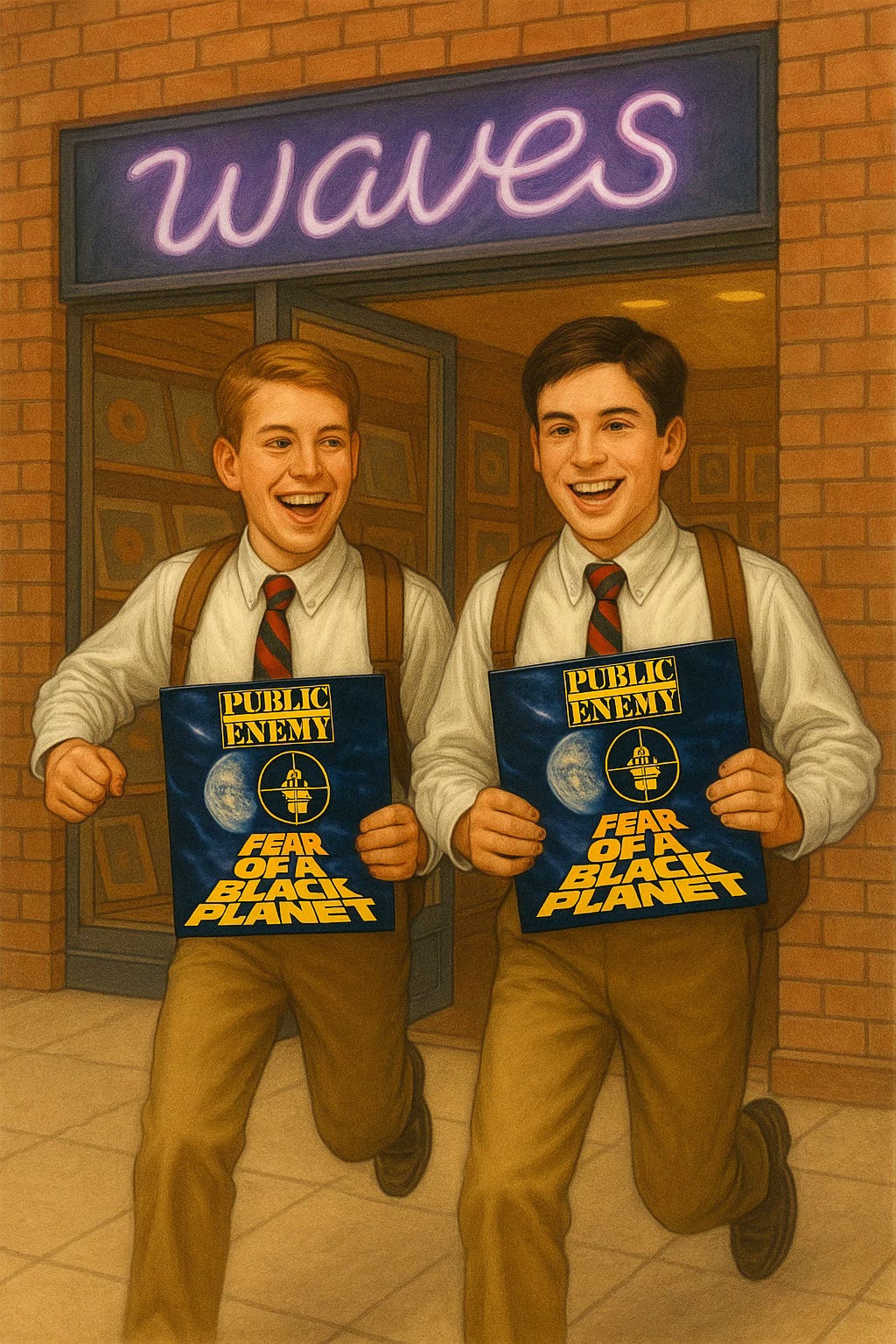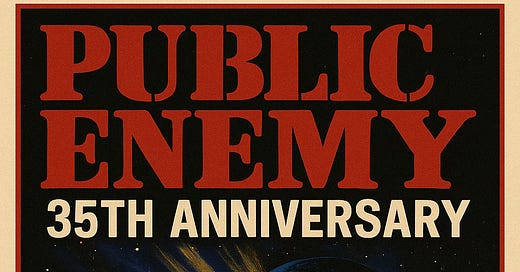Public Enemy Tried to Teach Us in 1990. Were You Listening?
This classic album didn’t just break beats—it broke illusions. For those of us who really listened, it became a classroom. Thirty-five years later, the lesson plan still holds.
Thirty-five years ago, something shifted for me. Thirty-five years later, its impact can still be felt. Profoundly. And the many lessons can be shared and taught to leaders and their teams.1
Where It All Began For Me
April of 1990. My best friend and I ran from school to Waves2 in Shadyside. We each walked out with a cassette in a plastic bag and something sharp ringing in our minds.
The album was Fear of a Black Planet. The artist was Public Enemy. It cost me twelve bucks, which is about thirty in today’s money.3 I was 13. Pittsburgh. Catholic grade school, which was almost behind me. But I wasn’t celebrating. I was listening. I was learning. And to this day, I believe that was Public Enemy’s intent.
I Did Not Dance to This Music
Everyone else was raving (or complaining) about the beats. The samples. The noise. The sirens. The chaos. But something hit me differently. I didn’t dance to this music. I listened. I learned.4
Chuck D’s voice didn’t invite you in—it forced you in.5 He didn’t rhyme. He reported. He taught. Line after line sounded like something someone didn’t want me to know, let alone understand. And even at 13, I could tell: something bigger is at play here, and Public Enemy is trying to teach us about it.
The singles like“Fight the Power” and “Welcome to the Terrordome” had already been released. They shook us awake. We waited for the full album in the greatest of anticipation. And when it appeared in stores, it hit like a crusie missile.
A Pattern Detected
Most kids my age just heard beat and rhythms, but I heard patterns. That album sent me to the Carnegie Library to start to look for answers. I checked out The Autobiography of Malcolm X by Alex Haley. I watched Do the Right Thing on VHS. I read, I listened, I asked. There was no Google back then. We just had intuition, curiosity, and Public Enemy.
The teachers at my Catholic grade school had had enough of us and “the noise” we were listening to. They were happy to push us out the door and send us off to high school. We were to be someone else’s problem now. But even at an all-boys Catholic high school in the City of Pittsburgh, we kept listening. We tuned in. We paid attention. And we started seeing exactly what Public Enemy was telling us about around our own city. And even in a regimented environment, preparing and programming us for college and life, we kept asking questions. “What is really going on here?”

The Censors Came from Both Sides
The left hated them. So did the right. It was the first time I’d seen something despised by both ends of the spectrum—united not in reason, but in reaction. Tipper Gore and Jerry Falwell agreed on one thing: Public Enemy was dangerous. Liberals accused them of division. Conservatives classified them as un-American and troublemakers. It seemed like everyone wanted them to be quiet.6
Alan Colmes tried to sound the alarm. His interview with Chuck D was even sampled on the album itself:
“Public Enemy—ah, in their music—ah, kinda rabble rousing. They, ah, talk about, ah, well things like… You know the white media has been very upset about some of the things you’re saying in your songs… Some of the people are very upset about the things you are saying.”7
That quote made the cut because it made the point. The outrage wasn’t about volume. It was about control.
Don’t Believe the Hype
By the time the album arrived, I had already heard the warning: Don’t believe the hype.8 And I didn’t. Many I knew didn’t. But why?
Keep reading with a 7-day free trial
Subscribe to The Whirl of ReOrientation: Escape the Script. Win the War. to keep reading this post and get 7 days of free access to the full post archives.




